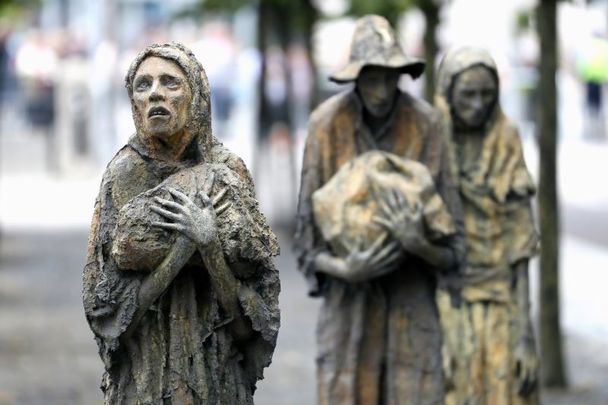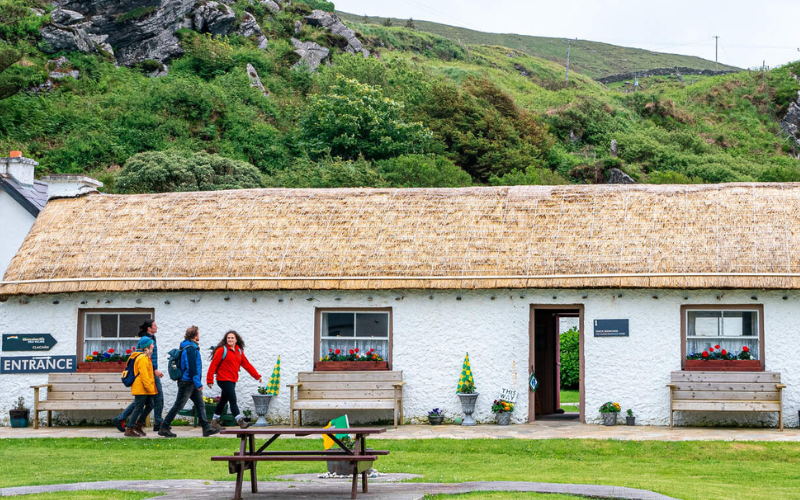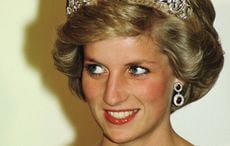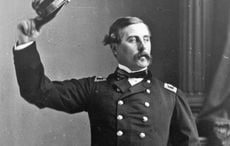The tragic events of the Irish Famine or Great Hunger are known to millions. Not so well known are the remarkable number of people who made contributions to the starving Irish from all across the globe.
Thanks to a wonderful book by Quinnipiac University professor Christine Kinealy, director of Ireland’s Great Hunger Institute, entitled “Charity and the Great Hunger in Ireland” we get a fantastic insight into those who gave selflessly to the starving Irish.
Here are some of those famous figures:
Tom Thumb
Only 2-foot 8-inches tall, British-born Tom Thumb was on board the USS Cambria bound for America when told of the Famine and that a collection was being taken up. He gave the top donation of $50.
Sultan of Turkey
Abdul Mejid Khan was the Sultan of the Ottoman Empire who had a liberal reputation and became involved in Famine relief for the Irish. First, he wanted to send a fleet of ships but was warned off by the British. He donated one thousand pounds instead, leading to a poem in his honor being written in Dublin.
“God bless the Turk, God bless the Turk
God Bless the Turk for his Christian work”.
Choctaw Indians
On March 23, 1847, the Indians of the Choctaw nation took up an amazing collection. They raised $170 for Irish Famine relief – an incredible sum at the time – worth in the tens of thousands of dollars today.
They had an incredible history of enduring deprivation themselves. Forced off their lands in 1831, they embarked on a 500-mile trek to Oklahoma called “The Trail of Tears.” Ironically the man who forced them off their lands was Andrew Jackson, the son of Irish immigrants.
Queen Victoria
Kinealy makes it clear Queen Victoria gets a bum rap to some extent on famine relief. She personally gave $2,000 and led two fundraising drives, by writing an appeal called a “Queen’s Letter." The first raised £50,000, the second £30,000.
James Fenimore Cooper
The author of “Last of the Mohicans” was a resident of upstate New York and was deeply troubled when he heard about the Irish Great Hunger. He presided over a meeting on Irish famine relief in Cooperstown and organized the first depot to receive provisions for a ship to send to Ireland.

Love Irish history? Share your favorite stories with other history buffs in the IrishCentral History Facebook group.
Abraham Lincoln
Lincoln was an obscure plains lawyer who had just been elected to the House of Representatives. He donated £5. He later stated that “The Lament of the Irish Emigrant“ was one of his favorite ballads.
The Committee of Colored Citizens
In Philadelphia, PA, a meeting was held to raise funds by the colored citizens' group during the height of the Famine. All money raised was given to Frederick Douglas to give Irish relief when he got to Ireland. A committee of five was appointed to head up the fundraising.
Rabbi Jacques Judah Lyons
Lyons held a meeting in his synagogue on Crosby Street in New York on March 8, 1847, to gather financial support to help raise funds for Irish Famine relief. The Temple Shaaray Tefila also raised money and an individual contribution of $500 was given by banker August Belmont (founder of Belmont Racetrack).
According to records from the March 8 meeting, Lyons told the gathering that its purpose was to “take measures for the relief of the famishing thousands of their fellow mortals in that unfortunate and destitute country, Ireland."
Pope Pius IX
Personally donated $1,000 and challenged the British government to do more on many occasions. He organized worldwide Catholic donations to be channeled through the Vatican and issued a rare encyclical asking Catholics everywhere to come to the aid of the Irish. Pope Pius IX was a huge admirer of Daniel O’Connell and his fight for Catholic Emancipation which heavily influenced his Irish intervention.
President Andrew Polk
Polk gave $50 dollars, but allegedly only after his Secretary of State James Buchanan gave $100. He blocked a bill in the House that would have sent $500,000 in aid to Ireland as unconstitutional but did help arrange for many ships bearing goods to leave for Ireland.
* “Charity and the Great Hunger in Ireland” by Christine Kinealy is published by Bloomsbury Press and is available on Amazon.
* Originally published in January 2014, updated in June 2023.




Comments